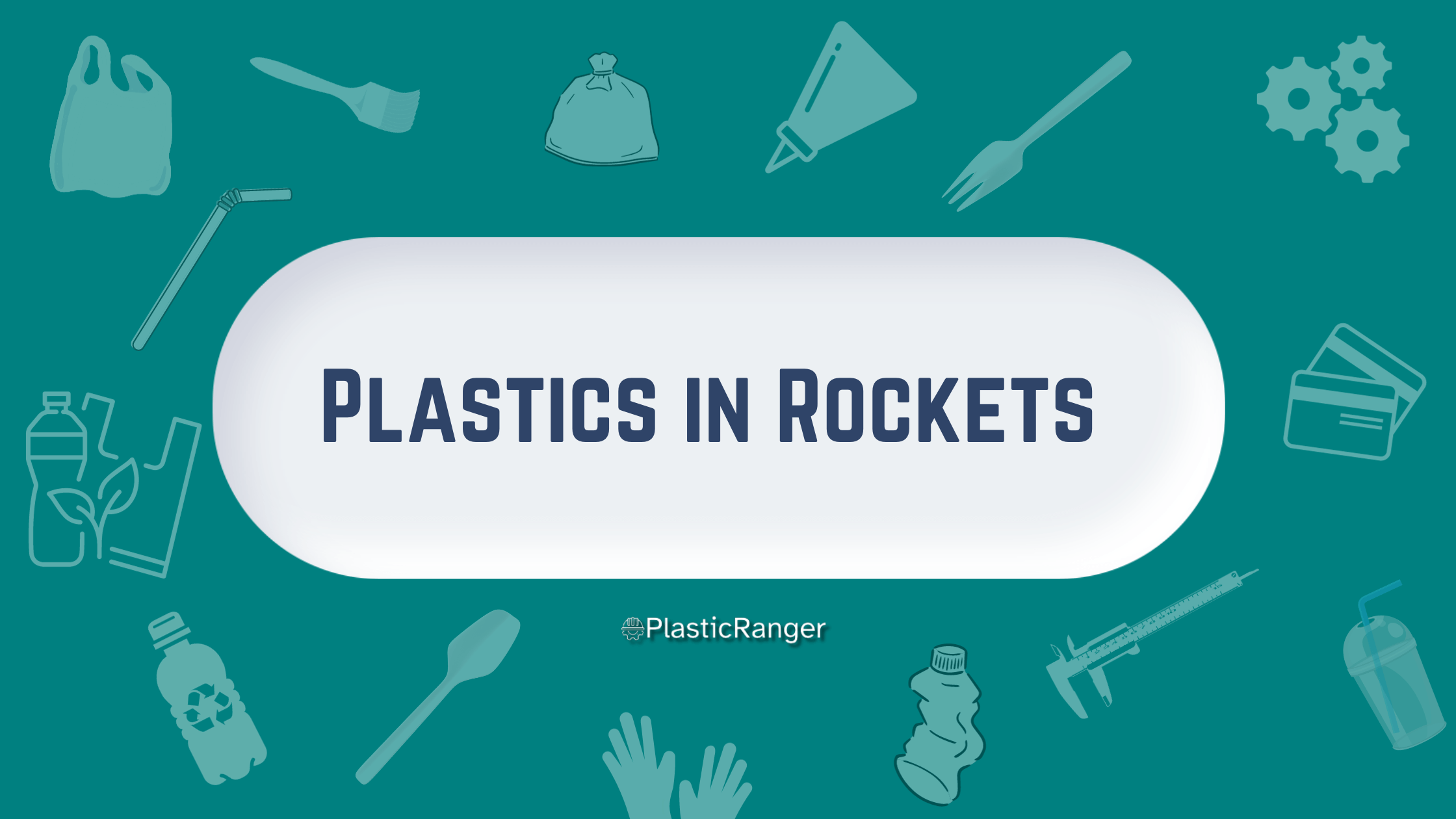In aerospace engineering, weight, strength, and durability are paramount considerations. Metals have predominantly been the materials of choice in rocket construction for decades. However, with advances in materials science, plastics – more precisely, polymer composites – have started to play a crucial role in rocket design and function
Plastics in Rockets
This article delves deep into the growing involvement of plastics in rocketry, highlighting their advantages, properties, applications, and the future of this intriguing synergy.

The Rise of Plastics in Rocketry
The aerospace industry’s interest in plastics isn’t new. Since the 1960s, plastics have been used in various capacities, such as insulation for wiring and as components in interior spaceship design. However, in the context of rocket structural components, the application of plastics – especially reinforced polymer composites – is relatively recent.
Specific Plastic Materials Used in Rockets
Carbon-Fiber-Reinforced Polymer (CFRP): Arguably the most widely known plastic composite in aerospace applications, CFRP consists of carbon fibers embedded within a polymer matrix, typically epoxy. It boasts an exceptional strength-to-weight ratio, which makes it ideal for primary structures such as fuselages and fuel tanks.
Glass-Fiber-Reinforced Polymer (GFRP): Similar to CFRP but using glass fibers, GFRP is less stiff than carbon composites but offers excellent durability and is less expensive. It’s used in various secondary structures and components where high strength isn’t the primary concern.
Polyimides: These high-performance polymers can withstand extreme temperatures, making them perfect for space applications. Kapton, a type of polyimide film, is mainly used for its excellent thermal properties, as seen in multi-layer insulation (MLI) blankets on spacecraft.
Polymethyl Methacrylate (PMMA): Often known by its trade name, Plexiglas or Lucite, PMMA is a transparent thermoplastic. It’s employed in spacecraft windows or visors due to its clarity and resistance to UV radiation.
Polyetheretherketone (PEEK): This high-performance plastic is known for its mechanical and chemical properties, even at elevated temperatures. PEEK can be used in various aerospace components, including seals, electrical connectors, etc.
Polychlorotrifluoroethylene (PCTFE): This fluoropolymer is used in applications requiring high oxidative and thermal degradation resistance. It’s particularly valued for its low outgassing properties in the vacuum of space, making it ideal for seals and gaskets in space vehicles.
Teflon (PTFE): Recognized for its non-stick properties in domestic applications, Teflon is also known as one of the best chemical resistant plastics and has high-temperature stability. In rockets, it’s often used in seals, gaskets, and as insulation for wiring.
Thermosetting Plastics: These materials, like epoxies, can undergo a chemical reaction when heated, turning them into a solid material. This irreversible process provides a rigid structure, ideal for binding materials in composites or as an adhesive in aerospace.
Why Consider Plastics?
Weight Reduction: A predominant challenge in rocketry is weight. The heavier the rocket, the more fuel it requires, adding more weight. Plastics, especially high-strength polymer composites, offer a compelling weight-to-strength ratio. By replacing specific metal components with plastic counterparts, the overall weight of the rocket can be significantly reduced.
Corrosion Resistance: Unlike metals, plastics are inherently resistant to corrosion. Since rockets are often exposed to extreme environmental conditions, from salty sea air at launch sites to the vacuum of space, this resistance can extend the lifespan of components and reduce maintenance requirements.
Design Flexibility: Plastics can be molded and manufactured into complex shapes and forms by injection molding allowing engineers more design freedom than traditional metals.
Thermal Insulation: Certain plastics provide excellent thermal insulation, which is crucial for rockets that experience extreme temperature fluctuations in space.
Applications in Modern Rocketry
Fuel Tanks: Several modern rockets use plastic composites for their fuel tanks. For instance, carbon-fiber-reinforced polymers (CFRPs) have been employed for their strength and lightweight properties.
Payload Fairings: The payload fairing, which protects satellites or other payloads from aerodynamic and environmental forces during launch, can be made from plastic composites. These fairings must be lightweight and robust, and plastics fit the bill perfectly.
Interiors: Inside the rocket, especially in manned missions, numerous components – from seats to storage bins – can be made from plastics.
Insulation and Shielding: Plastics are crucial in insulating thermally and electrically rockets. Moreover, they can be used as radiation shields to protect sensitive electronic equipment and astronauts from space radiation.
Challenges and Considerations
Despite the advantages, there are challenges in using plastics for rocket applications:
Thermal Expansion: Plastics tend to have higher thermal expansion coefficients than metals. This means they might expand or contract more under temperature changes, which could be problematic in space applications.
Degradation in Space: The harsh environment, filled with high-energy particles and radiation, can degrade certain plastics over time.
Cost: High-performance polymer composites can be expensive to produce, especially when they need to meet aerospace-grade specifications.
The Future of Plastics in Rocketry
The potential of plastics in rocketry is vast and largely untapped. As research continues, newer and more resilient plastic composites are being developed. Furthermore, as the space industry moves towards reusable rockets, the durability and longevity offered by plastics will become even more critical.
In conclusion, while metals will continue to play a significant role in rocket design, plastics have emerged as an indispensable ally in the quest to reach the stars. As materials science progresses, we can expect the footprint of plastics in rocketry to expand, ushering in a new era of lighter, more efficient, and durable space vehicles.
Quick Navigation
